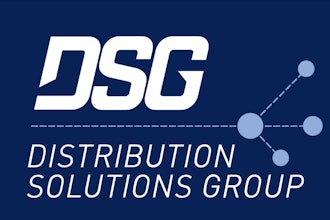
A great VMI program, one that delivers significant cost and time savings, is likely one that has been measured and optimized over time. The six KPIs we’ll explore in this post will help you track and use critical data to make continuous improvements to your program.
Before we dive into the KPIs, let’s take a look at the different types of VMI programs and how they work.
VMI Program Models
VMI programs come in Push or Pull models and should be customized to your enterprise’s needs. Some determining factors for choosing a VMI model are the size of your company, the number of parts you’re managing, proximity to your suppliers, and your current level of sophistication when it comes to inventory management.
Pull Strategies
Pull strategies are automatic, proactive, and are a form of ‘remote parts management.’
RFID MODEL
Advanced RFID technology is used to automate stock replenishment. Each bin has a unique Card with an embedded RFID chip. When the bin is low/empty the card is removed and placed inside an RFID box reader which will wirelessly trigger a replenishment order.
RFID SCALE WEIGHT MODEL
A scale with RFID reader and data logger inbuilt into the system monitors stock. When the weight goes below specified levels, an order is automatically produced and stock is sent by the VMI Vendor.
Both the RFID and Scale Weight models require an upfront investment for racking. These models often appeal to small-to-medium-sized enterprises.
Push Strategies
Push strategies are reactive and require onsite visits from your VMI vendors.
BIN SCANNING MODEL
The VMI vendor is responsible for maintaining stock levels. Each bin has a barcode label this is scanned by the VMI vendor operative using a handheld scanner. This starts the cycle of scan, remove the bin, refill, scan back into place at the customer’s line side location. In some programs, the customer will do the scanning themselves and have the vendor do the re-stocking.
Bin Scanning models can follow either of these two stocking options:
Dock-to-Dock: Vendor stocks from their dock to the customer’s dock (dock being warehouse to warehouse), usually by direct customer order, schedule or forecast plan.
Dock-to-Stock: This option looks the same as dock-to-dock except that the vendor does the restocking in the customer’s onsite supermarket.
CONSIGNMENT MODEL
This is the least common model, but some small-to-mid-sized manufacturers prefer it because it’s pay-as-you-go. It makes the most sense when the vendor and customer are geographically close to each other and the customer’s main driver is managing cash flow.
Indicators
Once you’ve put the right VMI program model in place, you’ll want to measure your program activity against these six key performance indicators:
- Fill Rate. The rate at which the order is met in response to demand. It is not a static KPI, but instead a number that you’ll want to monitor to better optimize your inventory and evaluate your suppliers.
- Actual Usage. The declining or rising usage of a specific part–likely brought about by an engineering change to the product. Knowing actual usage can help you make decisions about which parts to scrap to free up space and which parts are in demand.
- On-Hand Inventory. This indicates how many of which parts you currently have on-hand. Having a clear picture of your on-hand inventory will help you avoid unnecessary replenishment and re-stocking, which can disrupt the line and incur unnecessary costs.
- On-Time Delivery. This is the frequency with which parts are delivered to the right place at the right time. This can include customized options such as whole or partial order deliveries.
- Labeling/Packing Compliance. Clear labeling and packaging allow you to know ‘what’s in the bin’ so you can quickly process, store and find items in warehouses and plants. A VMI partner can help you by providing custom labels for totes, boxes and racks based on your specifications.
- Vendor Reporting and Meetings. A good VMI program is supported by regular meetings and reporting that help identify areas for improvement. Quality VMI partners will provide quarterly business reviews where data is shared about parts utilization and fulfillment.
Your VMI Partner Can Help
A VMI program can be continuously improved by reviewing program data, including the six KPIs mentioned above. You’ll need to work with a VMI partner who can help you to identify which KPIs are most important to measure your specific program.
Once you’ve identified areas for improvement, your VMI partner can suggest solutions and technologies for optimization. For example, if you’re experiencing inconsistencies with notifications on an RFID program – you may want your partner to check-in to see if the technology is working properly or if bin labels need replacing. Or, if there’s a sudden surge in demand for a part, a JIT system can automate ordering. Program customizations are endless – it’s just a matter of working with your partner to make data-driven decisions that deliver the results you need.






















